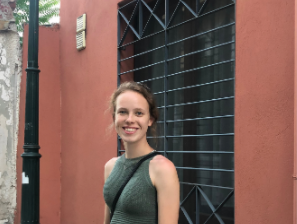Reif: Rapid transit: one ride toward saving our world
October 12, 2018
The Trump administration’s very own 500-page environmental impact study determined that climate change, while still a “Chinese hoax,” will lead to a 4 C (7 F) global temperature increase within this century. Climate scientist James Hansen warns that warming to this degree will result in a permanent European drought, the desertification of China, India and Bangladesh, an underwater Polynesia and an uninhabitable American Southwest. We are in the process of leaving our children a world on end-of-life care.
While irreparable damage has been done, our fate is not sealed, contrary to the Trump Administration’s assertions. As 29 percent of U.S. greenhouse gas emissions source from transportation, roughly 57 percent of which is from private automobile use, movement toward accessible and efficient mass transit is imperative.
The Greater Cleveland Regional Transit Authority (RTA) is overpriced and underperforming. It would, arguably, be acceptable that RTA costs account for over 20 percent of a Cleveland citizen’s income if it meant safer, more accessible and better-organized service. Cleveland’s reality is that only 44 percent of the population lives near a high frequency transit hub during rush hour, while for someone living in Portland, Oregon, the figure is 81 percent. Additionally, the state of Ohio has severely reduced financial support for the RTA system, providing only 1 percent of the cost of transit, while the typical state provides 20 percent.
Like many other mass transit systems in the United States, ours is in dire need of change. Cleveland is caught in a negative feedback loop where more money is needed to improve service, which requires greater ridership, which will only come if service improves or there is some other incentive. While the state should fund the RTA significantly more than they currently are, relying on the desperate hope that the state will do so is counterproductive and foolish. Rather, we might look to the successes of other cities in incentivizing public transportation system use.
Seattle has prioritized bus and transit transportation over private cars during morning and afternoon rush hours. Certain streets are closed to automobiles, and many streets in the downtown area utilize leading green lights where the bus lane receives a green light prior to regular lanes, allowing them to quite literally beat the traffic. Seattle public transit saw a 20 percent increase in ridership over the course of four years. Converted into pounds of carbon dioxide—a car carrying one person emits 0.89 pounds per mile while a full bus emits 0.14—the city has decreased carbon dioxide emissions by thousands of pounds yearly.
In Stockholm, Sweden, congestion pricing, charging drivers to access certain parts of the city, has resulted in a 20 percent decrease in car trips. Funds collected from drivers who still choose to drive their personal car are then used to improve roads and increase access to public transit.
Many American businesses subsidize transportation passes through employer-sponsored transportation programs. Apple Inc. workers at the corporate headquarters in California receive $100 (as of 2012) per month for use on public transportation. Seattle Children’s Hospital pays workers $4 for every day they don’t drive to work alone (and offer biking/commuter classes and a bike service center). Coca-Cola in Atlanta introduced a shuttle system that runs between their various offices and the public transit system drop-off as well as subsidizing over 50 percent of the price of a transit pass.
Cleveland Clinic partnered with RTA Commuter Advantage to offer the ability to purchase transit fare with pre-tax dollars and guarantee a ride to your destination regardless of day by either bus, cab or special dispatch vehicle.
The efforts made by Cleveland Clinic and the RTA are admirable, and a good start, but they are just that: a start. If we hope to tackle other problems—healthcare, education, women’s and LGBTQ+ rights, militarism, racism and so forth—we need to ensure our world remains viable long enough to do so.
Aggressively approaching all the incentives listed above as well as moving rapidly toward a completely renewable power system is necessary to salvage our planet. We have inflicted the damage done to date, and it is up to us to heal our hurting world. Enhanced public transportation is just the first step.
Jordan Reif is a first-year student on the pre-med track. She likes to spend her time reading, saving the bees or innovating new ideas for her start up “Ned talks”—a discussion forum for those who are just not quite good enough to make it to TED.


